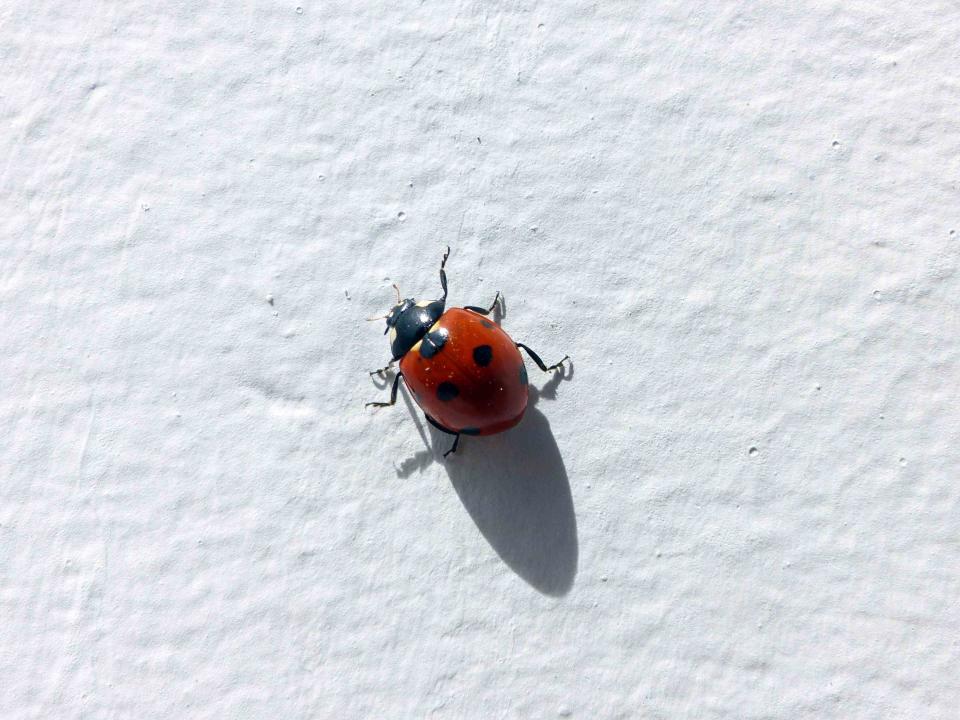How to Get Rid of Ladybugs Without Hurting Them
Learn why you may have a ladybug invasion on your hands—and how you can send these cuties on their way.

Raquel GM/Getty Images
Ladybugs are among the most beneficial insects, as they eat garden pests that can damage your garden or indoor plants, like aphids and mealybugs. (And they're super-cute too!) But sometimes, you'll find a lot of ladybugs coming indoors this time of year, which can be annoying—even if they aren't creepy.
Related: How to Create a Pollinator-Friendly Garden
So why do ladybugs suddenly materialize in your home—and what can you do about it without harming these garden all-stars? Get the scoop on why ladybugs may stop by for a visit.
Why Ladybugs Come Indoors During the Fall
Like many other animals, ladybugs are looking for a cozy place to overwinter when their food supply decreases and the weather gets cool, says Thomas Dobrinska, BCE, PHE, and technical service manager at Terminix. While they often set up shop under leaves, rocks, or landscape timbers, your house can be inviting too.
Related: 6 Common Houseplant Pests—and How to Destroy Them
"The beetles typically are drawn to the south and west sides of homes, where there is abundant contrast between sunlight and shadow," Dobrinska says. "The ladybugs then search for cracks, crevices, or small voids for overwintering shelter, in which they will settle for the winter."
Those places often end up being part of your house. "Occasionally, when it becomes warm or sunny during the winter, some of the adults will become active and move into the living space from the walls or attic via small holes or cracks and crevices. Canned lighting between the attic and living space and chimney gaps are a common entry point."
How to Prevent Ladybugs in Your Home
Like some much-less-beneficial insects, ladybugs find their way in through nooks and crannies. Dobrinska recommends sealing your house to help keep them out. "All vents should be screened with at least 16-mesh screening. Seal around conduit entrances, windows and door frames, and gaps along fascia boards," Dobrinska says. "These steps should be taken in June or July since you do not want to seal the ladybugs inside before they attempt to leave in mid- to late-spring."
How to Get Rid of Ladybugs (Without Hurting Them)
Smushing or spraying ladybugs feels wrong, since they're super beneficial for the garden—and these strategies could actually backfire spectacularly. "No attempt should be made to kill these beetles in wall voids at any time because dead insect bodies attract other beetles that will feed on them," Dobrinska says. Instead, look for gentler ways to get them out of your house—or simply live with them for a few months.
"The vast majority of ladybugs that are overwintering are in the void areas and are typically found in the living areas by mistake," Dobrinska says. If it's not freezing out, you can capture wayward ladybugs in a jar or cup and put them outside—though they may find their way back in.
If you really don't want them in your home (and feel okay about killing them), you can vacuum up any ladybugs you see, or use insect light traps for attics.
Otherwise, give them a place to shelter until the weather warms up. "In most cases, when the seasons change and the temperatures warm up consistently, the majority of ladybugs will find their way out of your home," Dobrinska says.
For more Real Simple news, make sure to sign up for our newsletter!
Read the original article on Real Simple.


